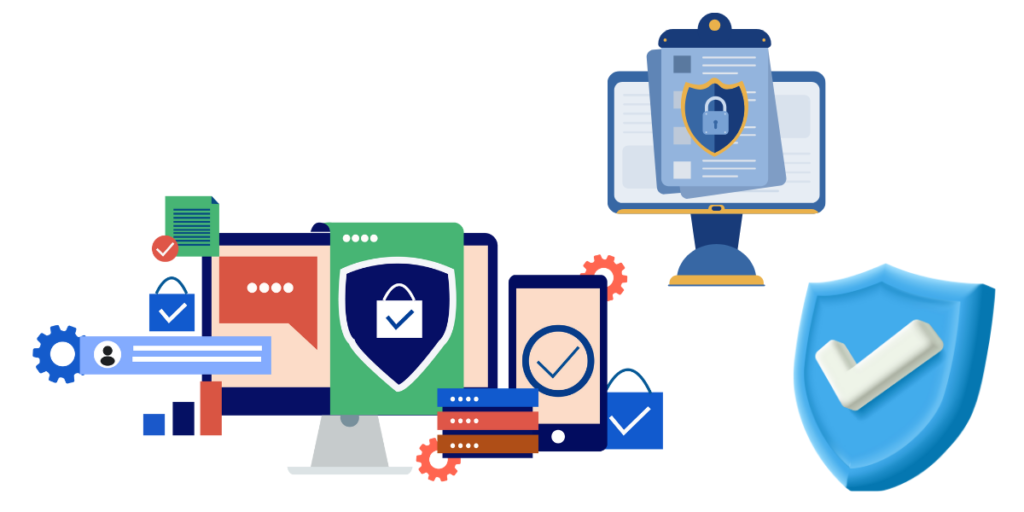Ethical Hacking vs Malicious Hacking
In this digital age, ethical hacking vs. illegal hacking can be more than a popular debate in the tech world. It’s a line of distinction that divides privacy from the chaos. Cyberattacks increase every day; it’s vital to comprehend the meaning behind these terms and how they impact companies, organizations, and even people like us.
In simple words, ethical hacking helps save lives (well, digital ones at the very minimum), and criminal hacking is against the law and harmful. It’s harmful. However, we shouldn’t end there. Let’s go deeper to learn what these two terms mean in importance, the reasons why, and how you can safeguard yourself and your business.
Difference Between Ethical Hacking and Malicious Hacking
At first glance, ethical hacking and malicious hacking may seem like they are similar in that both involve hacking into systems. However, the purpose, permission, the purpose, and impact are completely different.
| Feature | Ethical Hacking | Malicious Hacking |
|---|---|---|
| Purpose | To improve cybersecurity | To profit or cause harm |
| Permission | Fully licensed | Illegal and without authorization |
| Ethical Code | Yes, follows strict rules | There are no ethical standards |
| Outcome | Improved security, fixing the flaws | Theft, damage, or even disruption |
| Also Known As | Hacking with white hats | Black hacking with a hat |
Ethical hackers (or white hats) are cybersecurity experts hired by corporations to discover and resolve holes. Security holes. On the other hand, malicious hackers are just like burglars in digital systems to gain personal benefit or cause destruction.
“Our ethical hacker caught a major vulnerability just days before our new product launch,” recalls Janet who is the CTO of a fintech company. “That one test saved us from a potential PR disaster.”
Why Is Ethical Hacking Important for Organizations?
There is a truth to this: no system is completely secure.
That’s why smart companies, such as hospitals and banks, as well as government officials, employ security experts to replicate real-world attacks before the criminals can. Digital guardians spot problems, errors, and loopholes, then help close them quickly.
Some key benefits:
Protects against expensive data security breaches
Increases trust in the customer
It helps comply with regulations like GDPR and HIPAA
Improves the security posture of the company
If you’re searching for experts, SecureNinja Cybersecurity Training provides professional-level services and certifications for building in-house or externally available security capabilities.
Ethical Hacking and Malicious Hacking PDF Guide (Free Resource)
Do you want a portable reference for offline learning? Take a look at the ebook on ethical and malicious hacking, which explains everything from definitions to step-by-step procedures, tools, certification, and much more.
Great for students new to technology or entrepreneurs looking to improve their skills.
Step-by-Step: How Ethical Hacking Works
This is a quick and simple overview of the things ethics-based hackers do when they are being hired to work on a project
1. Define Scope and Rules
Confirm what can be evaluated (e.g., servers, websites, cloud applications, servers)
Define the extent to which testing should be.
2. Reconnaissance
Data collection regarding IP addresses, systems, and other entry points
3. Scanning and Vulnerability Assessment
Make use of tools such as Nmap or Burp Suite to pinpoint weaknesses
4. Exploitation
Do your best attempt to “break in” like a real hacker would do, using ethical methods
5. Reporting and Recommendations
Prepare a complete report that includes conclusions, proof of concept, and recommendations
This systematic way of thinking is what distinguishes white hats from black ones. It’s lawful, documented, and always ensures security.
What Are the Legal Implications of Hacking?
Let’s be serious for a second.
Malicious hacking is considered a criminal offense in virtually every nation. Hackers may be charged with:
Fines
Jail time
Permanently bans from certain platforms or systems
Laws such as those of the Computer Fraud and Abuse Act (CFAA) in the U.S. explicitly state that access to computers without authorization is a crime that can be punished.
However, ethical hacking is done with the explicit consent of the hacker; it is legal. Indeed, a lot of organisations promote it through bounty programs.
Top Tools Used in Ethical Hacking
Are you curious about what’s included in the toolkit of an ethical hacker? Here are some:
Wireshark – Network traffic analysis
Kali Linux – An operating system that is packed with hacking tools
Metasploit – Exploitation framework
Nessus – Vulnerability scanner
Aircrack-ng – Wireless cracking of networks
They are legal when utilized ethically–so long as permission is granted.
Make sure your business is protected with co-confidence. As a business owner, tech manager, or executive, here’s your plan of action:
Conduct an audit of security by a certified ethical hacker
Make sure your employees are trained using security awareness programs
Invest in penetration testing from trusted firms like SecureNinja
Plan an Incident Response in the event of an incident
Be sure to comply with the regulations to avoid lawsuits and penalties Ethical hacking is no longer a luxury; it’s now a necessity.
Frequently Asked Questions (FAQ)
Ethical Hacking and Malicious Hacking PDF — Where Can I Get One?
Download a comprehensive overview of ethical hacking and malicious hacking PDF on Academia.edu. It’s ideal for students as well as professionals looking for a structured and printable overview.
What is the main difference between ethical hacking and malicious hacking?
The primary difference is in the intention in the form of intent permission. Ethical hacking
is carried out by a person who has permission to find and correct security vulnerabilities.
Malicious hacking is not legal and aims to snare, steal, or harm information.
One shields you. One harms you. It’s as simple as that.
Why Is Ethical Hacking Important for Organizations?
Ethical hacking assists businesses in identifying vulnerabilities before cybercriminals. It safeguards sensitive information, builds trust with customers and ensures compliance with regulatory requirements, and ultimately reduces costs and damage to reputation.
Without it, businesses are in the dark in an era of digital warfare.
What is ethical hacking? How does it differ from Malicious Hacking in Praxis?
Ethical hacking is a transparent, formal procedure.
Contracted contracts signed
Defined scope
Techniques and tools for legal use
Complete report and recommendations
Hacking is malicious, secretive, criminal, destructive, and illegal. It’s the digital equivalent that involves breaking and entering.
What Are the Legal Implications of Hacking?
Hacking with malicious intent can result in fines, jail, and criminal charges.
Hacking with a purpose that is done with explicit permission will be legal and permitted.
Always obtain written permission before trying any system.
Final Takeaway
Ethical Hacking against Malicious Hackers: More than just a topic for technical experts. It’s an argument between offense and defense in the present-day world of the internet.
The decision to invest in the practice of ethical hacking is a decision to remain safe, respectable, and well-prepared. No matter if you’re a sole entrepreneur or the manager of an organization, this is the perfect moment to improve your security game.
Are you ready to create a bulletproof system for your business?
Check out SecureNinja Cybersecurity Training to hire an expert certified by SecureNinja or to sign up for expert-led training programs. Your data and peace of mind are worth the investment. In fields like telecommunications, ethical hacking plays a big role by helping companies find and fix security holes before malicious hackers can break in and cause real damage.

Useful Links
Subscribe Now
Don’t miss our future updates! Get Subscribed Today!
noorkhanacdc145gmail.com
©2024. Motictech. All Rights Reserved.


